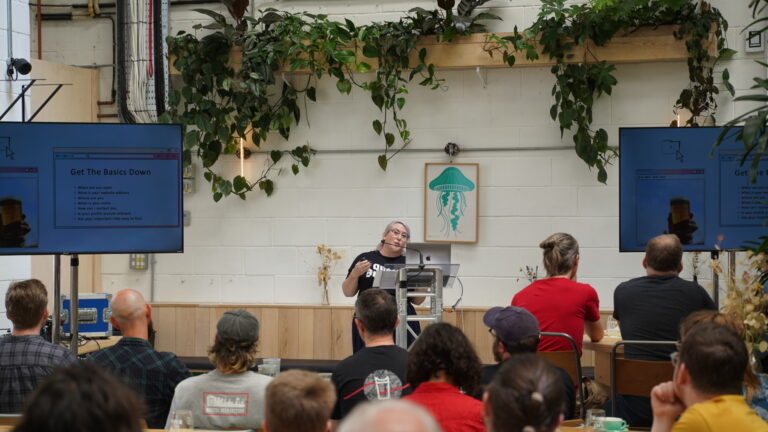Operating six malting sites across England, Scotland, Germany and Poland, Crisp Malt supplies the finest malt to the craft and global brewing, distilling and food industries. In this Q&A Sarah Marshall, Technical Sales Manager, shares her insights into the industry and explores why beer is attracting a more diverse audience than ever before.
1. Tell us more about your role as Technical Sales Manager – what does a typical day involve?
Every day is different. Most of my career has been focused around identifying issues. I could be supporting new product development, helping breweries with problem solving or giving tips for saving energy and money. As Technical Sales Manager, you’d expect me to sell malt, but giving support that goes beyond how to get the best out of beer’s most crucial ingredient is just as important in my role. Having conversations with suppliers and customers who are always looking to push boundaries and take things to the next level is a great source of joy.
2. What advice would you give to young professionals starting out in the industry?
Be endlessly curious and keep learning. The brewing landscape of today has evolved significantly. Nowadays it goes beyond malting and fermentation, homing in on areas like brewing processes, inventory management and quality control which are key to successful brewing and brewhouse operations. However well qualified you are, there’s always room to expand your knowledge in this ever evolving sector. Work experience is a fantastic way of gaining exposure to the industry. In my case, I have gained invaluable skills and knowledge from working in quality control which has prepared me for a wide range of challenges from customers looking for advice.
Science qualifications provide a great basis, but if academia and experience teach you one thing, it’s that there is always more to know. I’m super aware of the many areas where there’s more to learn, from colleagues, customers, research and the industry. I also recommend staying on top of current trends, identifying what beers are popular and new techniques. I tend to read a lot about emerging brewing science in academic journals and more cultural beer magazines. The brewing world is your oyster, and if you seek to be part of it, the opportunities are there to take.
3. What are the key global trends for the next five years we should look out for?
I’m seeing a seismic shift in consumer trends. Consumers want to know who is behind their beer and are taking a real interest in the intricacies of production. They’re also becoming more educated in what constitutes the appropriate flavour notes and freshness of beer. The no-and low-alcohol segment has seen a steady rise over the last few years, and this category is expected to continue to grow. Breweries have been investing significantly in
equipment, research and trial brews in the quest to keep beer on people’s drinking repertoire – even when they’re avoiding alcohol. One of the most encouraging beer industry trends is innovation and improvement in sustainability. The industry is now one of the most technologically advanced in the world and we will continue to see larger breweries harness technologies to reduce environmental impact.
4. What changes have you observed in the industry in general?
The biggest change I’ve seen is the adventurousness in drinking patterns. Perceptions have moved on and there is an appetite for innovative flavours and taste experiences. Brewers are constantly experimenting with brewing techniques to ensure flavours stand out in a crowded market that is moving away from the standard pilsner. This year has been a year of lighter, easier-drinking styles such as rice lagers, corn lagers and English milds. But in this industry, new beers are always pushing the boundaries of creativity. Niche categories like sour beers have also experienced a surge in popularity, offering a fresh alternative to bitter beers.
5. A recent report by Dea Latis found women are under-represented in managerial and brewing roles, with fewer than 25% of brewery management positions held by women. What more do you think needs to be done to get more women involved in the brewing industry?
Although women are under-represented in the brewing industry, there is absolutely no reason why they should be. There are many fantastic and inspirational female brewers, and women actually have more taste receptors on their tongues than men so can actually be a favourable asset. Hopefully more modern businesses are moving away from being a ‘boys club’ and giving equal opportunities to anyone working there. I have never experienced any form of prejudice against me as a woman in this industry and found it to be one of the most welcoming and friendly industries I have ever worked in. Maybe I have just been lucky, but generally I find if you are open and willing to learn, this is a friendly and inclusive industry to be in. I think that moving the craft brewing image towards more ‘hipster’ rather than ‘lager louts’ has helped attract more women into the industry as it seems more artisan and less intimidating, but maybe there is still yet more to be done to change beer’s image to younger female generations?
6. Favourite part of the job?
As someone who loves a good teaser, I really enjoy the problem solving that is involved in my job. I love meeting brewers and working out how different production plants work. It’s incredible how many different ways there are of getting to the same result. There are so many different brew kits out there. Any part I can play in demonstrating Crisp Malt’s long term commitment to investing into and growing our wonderful malts is a joy.
7. What is your advice to a beer novice going into a pub, when they don’t know what to order?
So many places these days offer an interesting and diverse beer menu which can make deciding what to order difficult. If you aren’t sure where to start, I recommend going as adventurous or unadventurous as you like. With this in mind, you could go for a more universally palate-pleasing beer like a lager or something more niche, like a sour or fruit beer. I don’t believe anyone that says they don’t like beer – I just think they haven’t found the right one for them yet! If you are really keen, some simple google research into a particular beer style will give you a general clue as to what that beer will taste like. Most brewers stick to a ‘style’ for each beer (like IPA, bitter, stout or NEPA etc), this will give you significant hints as to how that beer will taste & look.
8. According to you, what is good beer determined by?
This often comes down to several factors which evolve with consumer tastes, however quality and consistency of ingredients are the foundation that determines exceptional beers. Our barley is selectively sourced from the finest farms in East Anglia, Scotland and other parts of the UK. Our central lab in Norfolk is where all of our quality control takes place. We analyse every load of incoming barley, and every batch of malt we make to ensure consistency and quality so to make the brewer’s lives easier. The rest is about passion for the product (and a lot of cleaning in the brewery!).
9. Tell us a bit about Crisp Malt’s efforts to limit impact on the environment and any sustainable production methods.
Crisp Malt has been working closely with farmers and processing barley into malt since 1870, so passing traditional practices from one generation to another means sustainability has always been important. The electricity we buy from the grid for all UK Maltings sites has been sourced from renewables since 2013. There have already been a lot of improvements made in energy efficiency on the sites, including process optimisation and heat recovery in the kilns. We also transitioned our 18 HGV fleet from diesel to Hydrotreated Vegetable Oil (HVO) in February this year as part of a commitment to our long-term sustainability goals.
In order to reduce emissions in farming, both in the growing and delivering of raw materials and the haulage of malt around the country, we work with local grower groups to increase collaboration across the supply chain. This year we are trialling a low carbon fertiliser on malting barley, which has 60% less greenhouse gas emissions, less runoff and improved nitrogen use efficiency in crops. The malting process will always be energy-intensive and everyone in the business is highly conscious of the responsibilities that go with this.








